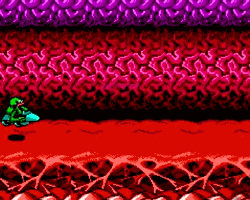I think it's safe to say people who have been playing video games for a long time are probably familiar with the term "Nintendo Hard." There is a semi-related concept I have been tempted to label with regards to a lot of old games and recently a lot of indie games. More specifically, brutal difficulty spikes that don't jive with the overall experience.
Within the indie scene it's not a particularly new phenomenon. FTL had it with regards to the final boss. Both Banner Saga and its sequel had absurd last boss battles as well. Bad North (before the developer patched in an easy mode) had a smattering of islands that were essentially deathtraps in which the reward for completing them didn't measure up to the amount of foes the player had to face off against. SOMA had a particularly ruthless hunter enemy toward the end of the game that (for some) ruined the overall experience. This eventually resulted in the addition of a "safe-mode," which much to my surprise, bumped sales of the game up significantly. Other indie titles like Rain World and Wargroove have a problem where the early part of each game is reasonable enough, but quickly turns into grewling slog as the challenge ramps up to become more frustrating than fun...again...patches eventually addressed these problems. So, all this begs the question, why do indie developers do this sort of thing to their games?
When it comes to the free-to-play model there is a manipulative logic to it. Difficulty spikes are deliberately inserted at key points in the game in order to incentivise real-money purchases of in-game power boosts. It sucks, but these games are technically free so I'm not sure how much one can justifiably complain about it - better to not play anymore than resentfully fork money over.
As more game-savvy individuals probably noticed though, the indie titles I specifically referenced previously aren't free-to-play. Most don't have much in the way of micro-transactions either. So, why do they have these weird spikes in difficulty? It's possible that the games in question simply didn't get much in the way of playtesting. After all, indie studios rarely have the resources to hire outside consultation. I think there might be another more insidious reason though...as easy as it is to get blinders when working on a project for years upon years, some indie devs might intentionally borrowing a page from old-school design by adding difficulty spikes into their games out of a desire to artificially increase longevity. There's an unfortunate tendency in a lot of gaming circles for people to assume long and hard is automatically better than short and easy. Obviously, by their nature indie games tend to be shorter than most big-budget titles. Oddly enough, price differences seem to only factor into opinions as far as dollar-per-hour ratios go. Frankly, I think it's a worthless metric because if a developer wants to make their game longer it's easy to go the Darkest Dungeon route and pad the experience out with a bunch of repetitive grinding/farming.
Indie games (like old-school games) can't do the self-perpetuating grind that is live services (unless they're a rogue-like), but they have a sodded bag of tricks at their disposal if the goal is to retain engagement by any means possible. Regardless of budget, genre or studio though, I'm convinced that it's always better to end a game with the player wanting a little bit more than a heck of a lot less.


No comments:
Post a Comment